-

Carbon Dioxide Removal (CDR) ... To Clear the Air, Look Beneath the Waves
Participants at the 26th United Nations Climate Change Conference (better known as COP26) late last year in Glasgow reiterated humanity needs to accelerate change in the coming decades to limit global warming to 1.5°C (or even to the 2°C as agreed up in the Paris Agreement). Meeting this goal by 2050, the formidable deadline agreed upon across environmental sectors to prevent dooming the planet, will require more than electric cars and veganism.
-
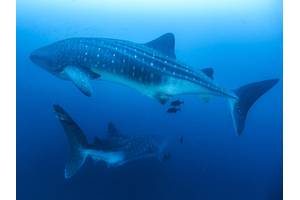
Galápagos: Extended Protection for Marine Resilience and Biodiversity
While much of the COP26 coverage last year relayed an urgency to act swiftly before the planet reaches a point of no return, some moments of hope shown through. One such announcement was made by Ecuadorian President Guillermo Lasso, who shared news of an expanded marine reserve, aiming to protect biodiversity and increase productivity and, in turn, natural carbon sink processes.The current (GMR) stands at roughly 130,000 km2, with an additional 60,000 km2 proposed.
-

Academia’s Climate Change Challenge is Far from Academic
Highlighted in Marine Technology Reporter's MTR100 is the work and technology ongoing in the halls of academia. The most recent report released by the UN Intergovernmental Panel on Climate Change emphasized our warming planet, an expected announcement for many in the scientific community. Faced with the confirmation that human activities have caused an increase in global temperatures, research has turned to seeking answers in the planet’s natural systems.
-

Lidar Helps to illuminate the Future of Oceans
The statement that 80% of our world’s oceans remain unexplored is well known—and possibly, overstated. Observance of United Nations World Oceans Day on June 8 underscored the deter-mination to better understand and protect our waters. While limitations in the ocean still inhibit the same level of progress that we’ve achieved on Earth’s terrestrial surface, some of the same technology is playing a role in the game of marine catch-up.Lidar…
-

The Forecast for Weather-Spotting Technology
The upcoming UN Decade of Ocean Science for Sustainable Development (2021-2030) should herald an increase in marine exploration, aiming to better understand our oceans to reverse the declining health of ecosystems. Heightened knowledge about these waters means a stronger, more effective commitment to even further exploration and to mitigating the impact of weather systems on coastal communities and marine ecosystems.Weather spotting and its related technologies are not a new industry…
-

SUBSEA TECHNOLOGY: Underwater Acoustics Pick up the Tempo
Humans have always been intrigued by what we do not know, especially that which we can’t see. At the time of writing, NASA’s Perseverance rover, fondly nicknamed Percy, has safely landed on Mars and sent over its first images of its Jezero Crater landing site. Percy, among many other technological creations, demonstrates the curiosity and capacity of our exploratory efforts. While our achievements in outer space exploration pile up…
-

A look inside Emily Penn’s eXXpedition
Emily Penn is an ocean advocate and co-founder of eXXpedition. As an artist, skipper and marine explorer, she is leading the world's newest crew of superheroes: those dedicated to saving our planet. Born and raised in England, Penn grew up sailing and was trained as an architect at the University of Cambridge—a career that would pan out very differently than she imagined. Today, with 12 years of action and outreach under her belt…
-

Ocean Influencer: Dr. Jyotika Virmani, Schmidt Ocean Institute
The July/August edition of Marine Technology Reporter, the 15th Annual "MTR100", recognizes Dr. Jyotika Virmani, Schmidt Ocean Institute’s (SOI) first executive director, as an 'Ocean Influencer.' Virmani defines what it means to be passionate and motivated in the field of marine science and exploration. Her humble start began in her hometown of Manchester, England, inspired by the nearby Lovell Telescope — which was then the world’s largest steerable dish radio telescope.
-

The Ocean's Microplastics Mess: Technology & Technique to Identify & Clean Up
The science and technology surrounding discovery, mitigation and clean-up of microplastics in the world’s environment makes this year’s “MTR100.” Here we offer insights on the organizations, people and technologies taking the lead.As marine journalists, scientists, technologists, activists and enthusiasts, we are aware of the large-scale impact that consumer macro-plastic products have on aquatic ecosystems.
-
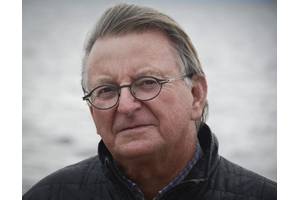
Ocean Influencer: Graham Hawkes, HAWX Open Ocean
The July/August edition of Marine Technology Reporter, the 15th Annual "MTR100", recognizes Graham Hawkes a subsea innovator, explorer, inventor and pusher of boundaries. A pioneer in the realm of ocean engineering, he’s designed and built more than 60 manned submersibles—everything from atmospheric dive suits to flying subs. As a test pilot, he’s maintained the deepest solo dive record for more than 20 years.
-
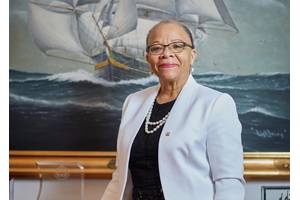
Ocean Influencer: Dr. Cleopatra Doumbia-Henry, President, World Maritime University (WMU)
The July/August edition of Marine Technology Reporter, the 15th Annual "MTR100", recognizes Dr. Cleopatra Doumbia-Henry, president of the World Maritime University (WMU) in Sweden, as a leading "Ocean Influencer." She is a leader on issues impacting the international shipping industry, maritime law and gender equality in ocean-related fields. She is a distinguished academic in the field of international law…
-

PML: Invasive Seaweed Finds New Role as Coastal Cleanup Hero
A research team, led by the University of Exeter and the University of Bath, has developed a cheap and simple way of creating biofuel and fertilizer from seaweed, aiding in its cleanup and the removal of plastic from tourist beaches in the Caribbean and Central America.The study, recently published in the Journal of Chemical Technology and Biotechnology, aims to remove invasive seaweed, like Sargassum…
-

BIOS: North Atlantic Carbon Sink Shrinking Due to Warming
An analysis of North Atlantic Ocean water masses has made it clear that the effects of a warming planet extend beyond biology—they impact the physics of ocean circulation, too. The research, recently published in Nature Climate Change, was conducted by scientists from the University of British Colombia, the Bermuda Institute of Ocean Sciences (BIOS), the French Institute for Ocean Science at the University of Brest…
-

NIWA: Slow-slip Earthquake Research Gains Momentum
Two international scientific expeditions, undertaken in 2017 and 2018, have allowed scientists to study New Zealand’s largest earthquake fault in hopes of learning more about slow-slip earthquakes in subduction zones worldwide.The International Ocean Discovery Program (IODP) expeditions to the Hikurangi subduction zone off the east coast of the North Island were jointly led by researchers from the National Institute of Water and Atmospheric Research (NIWA)…
-

OVI: 103 Tons of Garbage Removed From North Pacific Gyre
Ocean Voyages Institute’s marine plastic recovery vessel, S/V KWAI, docked at the port of Honolulu at the end of June after a 48-day expedition successfully removing 103 tons (206,000 lbs.) of fishing nets and consumer plastics from the North Pacific Subtropical Convergence Zone (more commonly known as the Great Pacific Garbage Patch or Gyre).The Pacific Gyre, located halfway between Hawaii and California…
-

SOI: Amidst Pandemic, Seafloor Mapping Zooms Ahead
Scientists working remotely with Schmidt Ocean Institute (SOI) have completed a first look at deep waters in the Coral Sea, despite the continuing COVID-19 pandemic. As one of the only at-sea science expeditions to continue operations, the team has discovered the deepest living hard corals in Eastern Australian waters, sighted fish in new regions and identified up to 10 new marine species.SOI’s R/V Falkor spent the 46 days in the Coral Sea Marine Park…
-
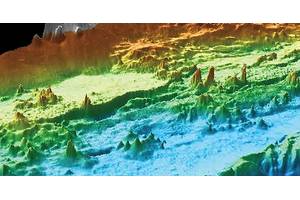
MBARI: Hydrothermal Mapping is Heating up
A recent paper by Monterey Bay Aquarium Research Institute (MBARI) has revealed almost 600 hydrothermal chimneys around the Endeavour Segment of the Juan de Fuca Ridge, about 350 kilometres (220 miles) northwest of Washington State. The vents, located in a valley about 14 kilometres (8.6 miles) long and 1.5 kilometres (0.9 miles) wide, has been studied previously, but never mapped until now because…
-

Dalhousie University: Quiet Oceans Speak Volumes During Lockdown
Research at Dalhousie University shows that a quieter ocean—courtesy of the current COVID-19 pandemic lockdown—can benefit marine life, particularly those listed on the endangered species list, like killer whales.David Barclay, an assistant professor in the Department of Oceanography, and researchers in his lab took advantage of the current lockdown to explore how the underwater soundscape has changed during the pandemic.
-
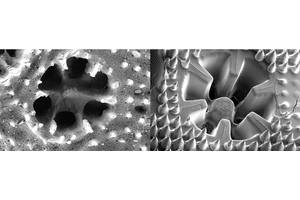
Scripps Institution of Oceanography: 3D-printed Coral Are Natural Producers of Biofuels
Researchers at the Scripps Institution of Oceanography and the Jacobs School of Engineering at UC San Diego, alongside the University of Cambridge, UK, have 3D printed coral-like structures capable of growing dense microscopic algae populations. The work is aimed at the development of compact, efficient bioreactors for producing algae-based biofuels and could lead to a better understanding of the coral-algae relationship…
-

Scripps Institution of Oceanography: 3D-printed Coral Are Natural Producers of Biofuels
Researchers at the Scripps Institution of Oceanography and the Jacobs School of Engineering at UC San Diego, alongside the University of Cambridge, UK, have 3D printed coral-like structures capable of growing dense microscopic algae populations. The work is aimed at the development of compact, efficient bioreactors for producing algae-based biofuels and could lead to a better understanding of the coral-algae relationship…
 December 2025
December 2025

As 2025 comes to a close, MTR explores trends for 2026 and the newest products and vessels in the maritime industry.
Read the Magazine
This issue sponsored by:

Authors & Contributors

Marine Technology Reporter is the world's largest audited subsea industry publication serving the offshore energy, subsea defense and scientific communities.
Subscribe
